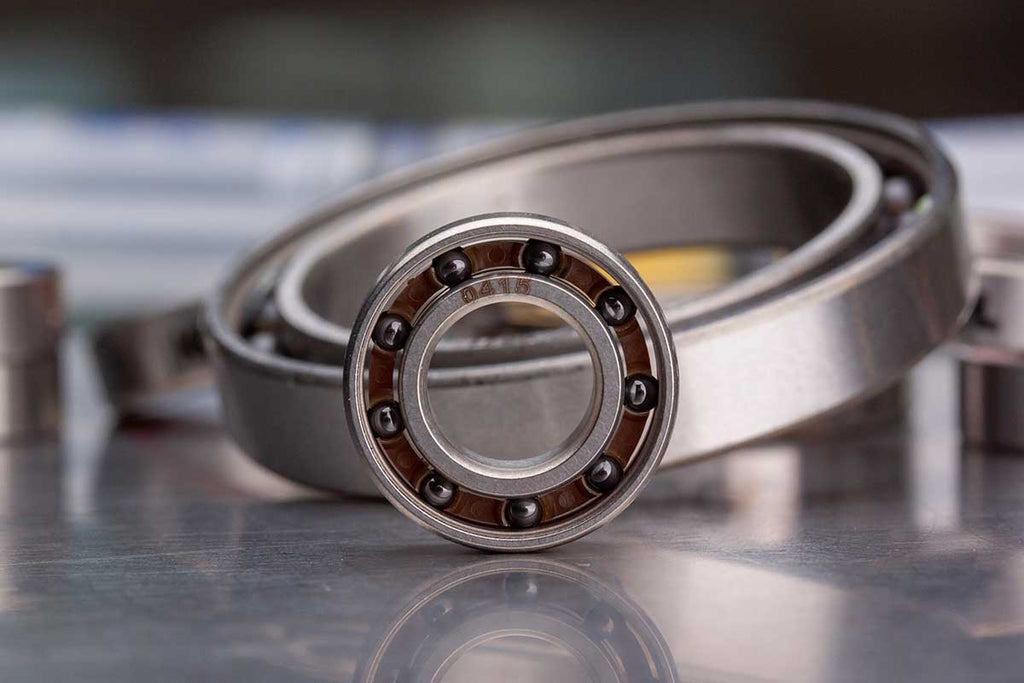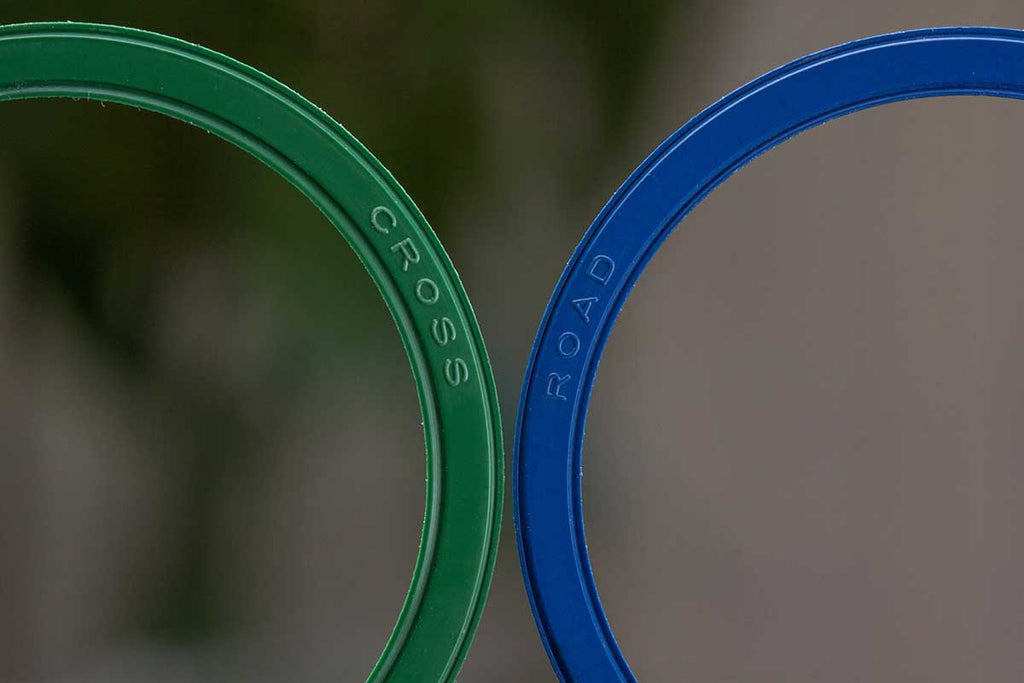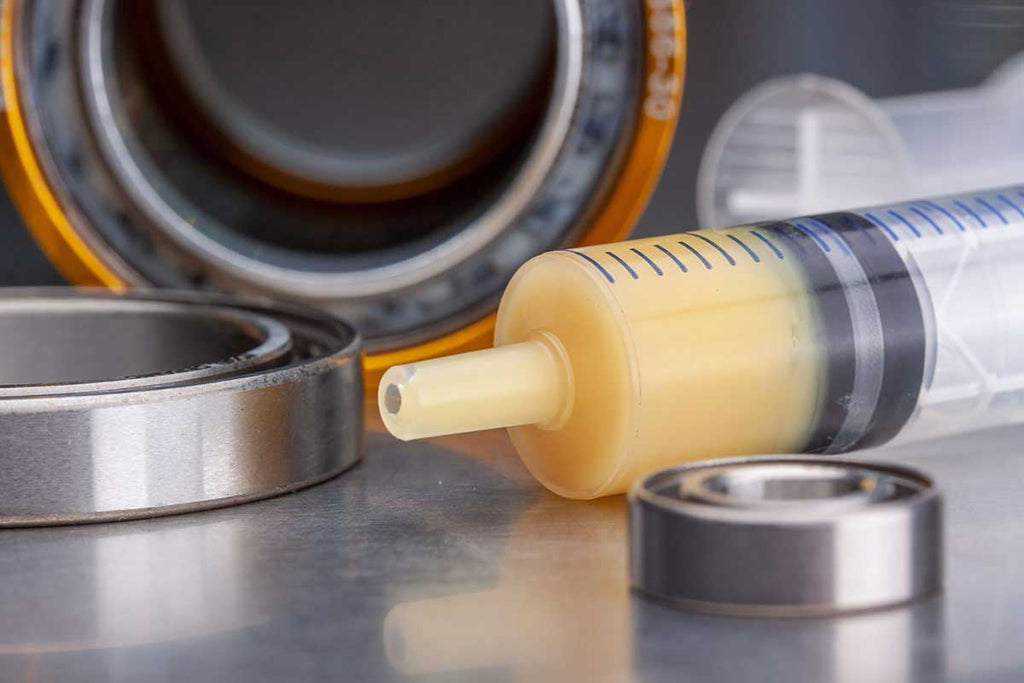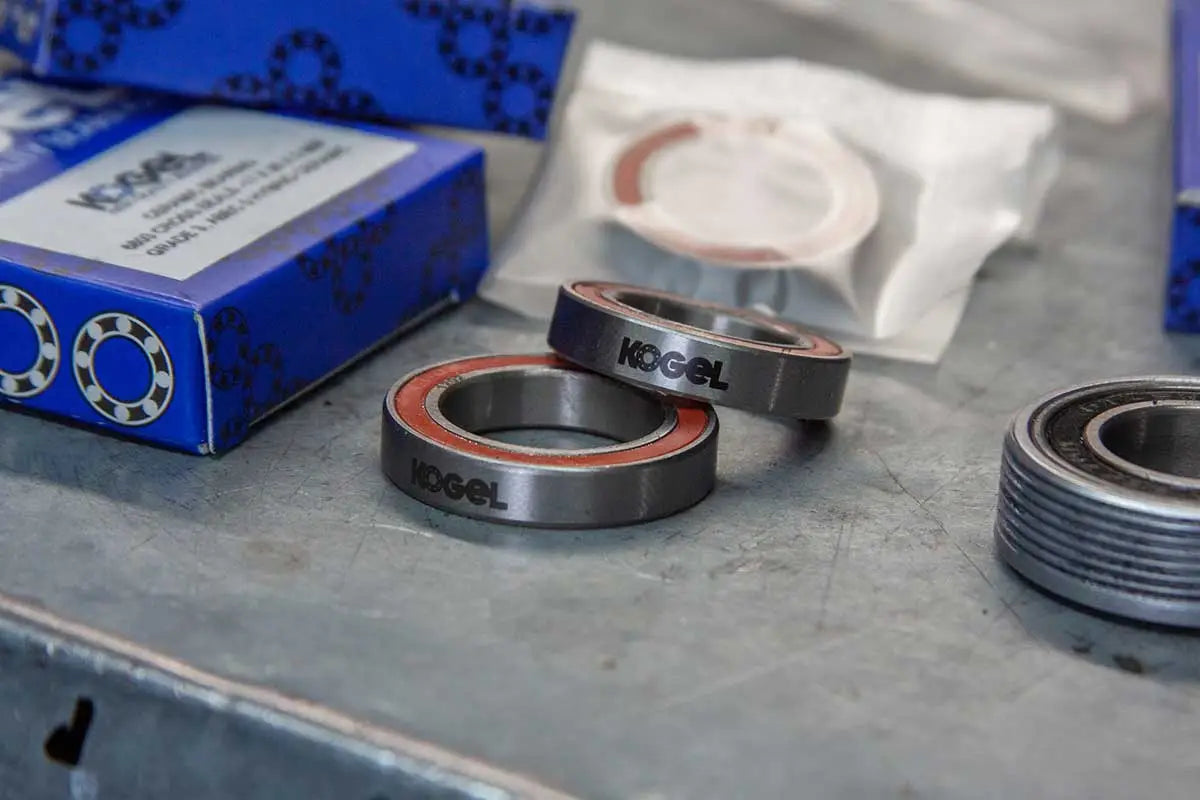Radial ball bearings, the most common type in bicycle applications, have five components to them: balls, races, cages, seals, and lubrication. The quality of the ball bearing is determined by any single one of them. I always like to see the quality of a bearing similar to a chain: determined by the weakest link! You could use the best, smoothest, roundest balls on the planet and use perfectly smooth races and achieve super low friction. However, this whole proposition goes out the window if you add some gooey grease for lubrication.
The 5 Components of a Ball Bearing
So let’s have a look at all five components that make up a ball bearing and how we can optimize each one of them leading to best performance for your bicycle.

Bicycle Bearings - The Balls have 3 Factors
The most common materials used for the balls in a bicycle bearing are steel (typically 52100 if you’re a metallurgist) and Ceramic. Silicon Nitride is the black material. I have seen Zirconium, which is white colored but it is less hard and durable than Silicon Nitride.
The most important features in a ball are: roundness, hardness and surface smoothness. Let’s go!
Roundness is very obvious: the closer a bearing ball is to a perfect sphere, the easier it will roll. This number is measured in Grade. Lower numbers are better: a low quality steel ball will be grade 300, a higher quality steel ball which you will find in a bottom bracket from a big manufacturer will be Grade 25. Kogel uses Grade 3 ceramic balls.
The fact that it’s called grade 3 implies that there is a grade 2 and 1, which are better. Which is true! The reason why Kogel decided to use grade 3 is linked to the fact that bicycles operate at low RPMs. The fastest rotating part on a bicycle does so at around 400 rotations per minute. A grade 3 ball is incredibly accurate. Making it even more perfectly round would not improve performance in a measurable way, but would ramp up the cost exponentially.
Hardness is a main factor in bicycle bearing durability: if a metal ball is not heat treated well, it will easily dent or deform under load. Just have a close look at the size of the balls in your bottom bracket bearings and think back to the last time your were standing on the pedals, mashing at full power in that important town sign sprint. The internal loads and forces in your bottom bracket are off the charts! Ceramic balls do not deform like metal, typically if the load exceeds what they can handle, they just crack or pulverize. I’m sure you have seen the famous hammer and anvil test in a cycling video.
Surface smoothness is a determining factor in rolling speed. Have you ever taken a drive with that friend that needed mud tires for his truck that never goes off-road? Which one was louder, the road noise from the tires or him complaining his gas mileage went up?
At a microscopic level, steel can never be perfectly smooth. It’s a feature of the material. After a perfect polishing session, it will still look like a lunar surface under a microscope. Ceramic balls can be polished to be perfectly smooth. Rounder, harder, smoother.
I think I just explained why Kogel believes ceramic balls are the best material for bicycle bearings.
Bicycle Bearings - The Races affect Friction
The inner or outer rings, or races, in a ball bearing are the road that your carefully selected balls need to drive on. The road can be smooth like a race track or bumpy like a gravel road. This will have an impact on friction.
We just determined that ceramic materials are rounder, smoother and harder, yet full ceramic bearings are rare in bicycles. The issue is fragility of the material: ceramic races can crack from hard impacts like hitting a pothole. Kogel Bearings operates in the land of lawsuits and personally I am not interested to see what happens if someone cracks a race in a front wheel and it stops on a dime.
For this reason, we have to make the best we can out of steel rings. This means many steps of heat treating to harden the material and polishing! And then polish some more. We refer to the inside of our bearings as having a mirror finish.
Bicycle Bearings - The Cages Separate
The internal cages are typically made of a synthetic material. We sometimes see them made out of metal. The main goal is to separate the balls in the bearing. To keep them at equal distance from each other instead of bunching up on one side.
We have not noticed much influence on friction or bearing life because of these.

Bicycle Bearings - The Seals Protect
Seals are meant to protect the bearing internals from outside contamination. The application determines how much protection is needed.
Since the range of use for bicycles is enormous, Kogel has offered two seal options since day one. We roughly qualify them as road and off-road, but that would be selling them short.
Road seals are rubber seals that make the lightest possible contact with the bearing races. There is minimal pressure between the rubber and metal parts to ensure the lowest friction we can achieve from a sealed bearing. If the seals were any shorter, they would actually be open and not have any protection from outside contaminants.
Cross seals are our seals for best protection. Built for cyclocross and mountain biking, cross seals have a double lip that traps some grease between the seal and the metal races. This setup builds a close to perfect sealing which keeps lubrication in the bearing and muddy water outside. Cross seals are meant to protect your bike during creek crossings and mudfest CX races.

Bicycle Bearings - Lubrication Matters
Tons and tons of research has been done into lubrication by any bearing or bike company I have ever known. Just like seals, there is a balance to strike between lowest friction and best durability. Liquid oils will cause low friction, but need to be reapplied often. Thick sticky greases will be more durable at the expense of some additional drag. The trick is to find a balance between the two.
Kogel offers one type of grease, our Low Friction Grease, for all applications. Cross and Road seal bearings use the same grease, only the cross bearings get a higher filling rate.
If you are looking for the absolute lowest friction for race day, we can treat your bearings with a race oil, which will last a few hundred kilometers. Just enough for a few warmup rides and the bike leg of a full distance ironman. After the race you are supposed to service your bearings with a new race oil treatment, or use grease for training all through the off season.
Conclusion
Ultimately, if any one of these 5 components in your bicycle's radial ball bearings are not optimized, it can lead to lower performance and you might have to purchase new ones sooner than expected.
Staying on top of lubrication is important for durability, but it can also greatly affect your race day performance.
The take home lesson here is whether you ride mountain, road, gravel, or a triathlon, take care of your ball bearings and they'll take care of you.

